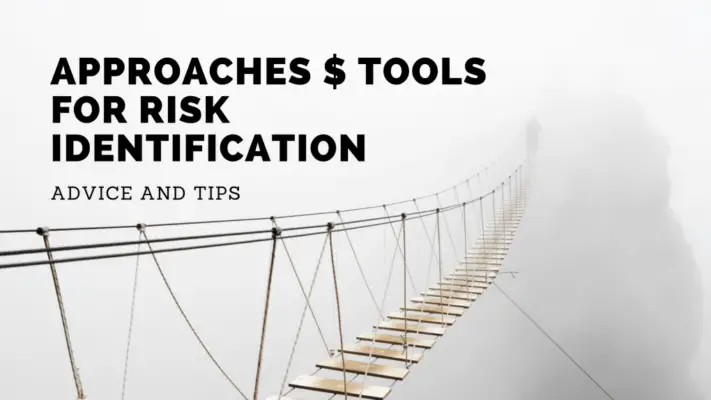The final step in the risk identification process is documenting and communicating the identified risks. This involves recording the risks in a risk register or similar document, along with relevant information such as the nature of the risk, its potential impact, and the likelihood of its occurrence.
The risk register serves as a central repository for all risk-related information and is a key tool for risk management throughout the project. It allows all stakeholders to understand the risks that have been identified and provides a basis for risk analysis, response planning, and monitoring.
Communication is also a crucial part of this final step. All relevant stakeholders should be informed about the identified risks, potential impacts, and management plans. This ensures everyone knows the risk landscape and can contribute to risk management.
Additionally, risk identification is an ongoing process. Even after the initial identification process, it’s important to continue identifying new risks as the project progresses and circumstances change.
Risk management is a crucial component of any successful project or business. It involves identifying potential risks and developing mitigation strategies, ensuring the project or business runs smoothly without significant setbacks.
Risk identification is the initial stage of risk management, where potential risks are identified and assessed. However, it is only the first step in an ongoing risk management process.
The final step in the risk identification process marks the beginning of the next phase: risk mitigation. Once potential risks have been identified and evaluated, developing a comprehensive plan to manage these risks effectively is essential.
This includes determining appropriate responses to each identified risk, developing contingency plans for unforeseen events, and establishing monitoring mechanisms to track progress toward mitigating those risks.
This article will explore the final step in the risk identification process and why it is critical for successful risk management planning.

Overview of the Risk Identification Process
Identifying risks involves a systematic approach that requires evaluating and analyzing potential sources of uncertainty, vulnerabilities, and threats that may impact an organization’s objectives and operations.
This process typically begins with establishing a risk management framework that defines the scope, objectives, methodology, roles and responsibilities, and performance metrics for risk identification.
The framework also outlines the criteria for prioritizing risks based on their likelihood of occurrence, potential impact on the organization’s goals and objectives, and available resources for mitigation.
Once the risk management framework is established, the next step is to gather relevant information from various sources such as internal stakeholders (e.g., employees, managers), external experts (e.g., consultants), industry publications or reports (e.g., regulatory bodies), historical data (e.g., past incidents), or other relevant data sources.
This information is then analyzed to identify potential risks affecting different aspects of an organization’s operations, such as financial performance, reputation management, legal compliance, strategic planning, or operational efficiency.
After identifying potential risks through gathering and analyzing information from diverse sources within an organization and beyond it – including environmental factors – it becomes necessary to prioritize which risks are most significant.
This prioritization should be based on factors like the probability of occurrence versus severity if they occur; expected frequency over time; what might happen if each risk were realized vs. likely consequences in business continuity plans; cost-benefit analyses versus resources available for mitigation efforts; etcetera.
Prioritization helps organizations focus their limited resources on those areas where they will have the greatest impact in mitigating or eliminating identified risks before they can cause damage to operations or goals.
Importance of Developing a Risk Management Plan
Developing a risk management plan is essential in controlling and mitigating risks that can impact project success.
This plan ensures that potential risks are identified, analyzed, and addressed proactively, reducing the likelihood of negative outcomes.
Furthermore, it outlines strategies for managing risks throughout the project lifecycle and provides a framework for stakeholders to work together toward achieving project objectives.
Role in Controlling and Mitigating Risks
Controlling and mitigating risks requires a comprehensive approach that involves identifying potential hazards, assessing their severity, prioritizing them based on their impact, and implementing effective risk management strategies to minimize the likelihood of negative outcomes.
A key role in controlling and mitigating risks is to develop a risk management plan that outlines the steps necessary to manage identified risks.
The following are three essential factors that play a significant role in controlling and mitigating risks:
- Risk Assessment: This process involves identifying potential hazards and determining the likelihood of occurrence and severity of consequences if it happens. Conducting a thorough risk assessment enables organizations to prioritize risks based on their impact, which helps allocate resources appropriately.
- Risk Mitigation Strategies: Implementing effective strategies helps reduce the likelihood of a risk occurring or mitigate its impact if it happens. Organizations can employ avoidance, transfer, acceptance, or mitigation techniques to control identified risks.
- Contingency Planning: Despite taking all preventive measures possible, some unforeseen events may still occur, leading to negative outcomes. Contingency planning involves effectively developing an action plan for these unexpected incidents. Having contingency plans ensures timely responses to limit damages and restore normalcy as soon as possible.
Managing risks is critical for organizational success as it reduces uncertainties associated with negative outcomes while improving operational efficiency by enhancing preparedness for adverse events.
Effective risk management requires organizations to adopt an integrated approach encompassing multiple stages, from identification to monitoring and evaluation.
Importance in Ensuring Project Success
Effective risk management is crucial for ensuring the success of projects and minimizing the likelihood of negative outcomes. One important step in this process is identifying potential risks that may arise during the project’s lifecycle.
This can be accomplished through various techniques, such as brainstorming sessions or conducting risk assessments. Once risks have been identified, they can be analyzed to determine their potential impact on the project and develop appropriate mitigation strategies.
However, it is important to note that risk identification should not be viewed as a one-time event but rather an ongoing process throughout the project. As new information becomes available or circumstances change, previously unidentified risks may arise and must be addressed.
The final step in the risk identification process involves documenting all identified risks and their corresponding mitigation strategies in a comprehensive risk management plan.
This plan guides managing and controlling risks throughout the project’s lifecycle, ultimately contributing to its success.
| Pros | Cons |
|---|---|
| Helps identify potential problems before they occur | It may not capture all possible risks |
| Provides a framework for developing effective mitigation strategies | May not capture all possible risks |
| Facilitates communication among team members regarding potential issues | Requires ongoing monitoring and updating |
Table 1: Pros and cons of implementing effective risk management practices
Key Elements of a Risk Management Plan
One essential aspect of a comprehensive risk management plan is outlining the key elements that will guide the identification, assessment, and prioritization of potential risks. These elements ensure that all stakeholders understand the project’s risks and how they will be managed throughout its lifecycle.
The following elements should be included in any risk management plan.
- Risk Identification: This process involves identifying all possible risks to the project by reviewing historical data, conducting stakeholder interviews, analyzing project documents and assumptions, and brainstorming sessions.
- Risk Assessment: Once identified, each risk must be assessed for its likelihood of occurrence and potential impact on project objectives using probability-impact matrices or decision trees.
- Risk Prioritization: Risks are then prioritized based on their assessed likelihood and impact, allowing for allocating resources to address higher-priority risks first.
- Risk Response Planning: Finally, a response plan is developed for each identified risk based on its priority level. Responses may include avoiding the risk altogether, transferring it to another party through insurance or contracts, mitigating it by reducing its likelihood or impact, or accepting it if it falls within acceptable tolerance levels.
It also provides a framework for ongoing monitoring and control of identified risks throughout the project’s life cycle.
Effective communication with stakeholders regarding identified risks is also critical to ensure buy-in from team members who will implement mitigation strategies when necessary without inducing unnecessary panic, which could negatively affect morale or cause undue stress among workers involved in various stages of production processes.
Collaborative Efforts in Risk Management
Collaborative efforts among stakeholders are crucial for successful risk management, as they bring diverse perspectives and expertise to identifying, assessing, and prioritizing potential risks.
Identifying risks involves comprehensively analyzing all possible threats affecting an organization’s operations. This requires input from various departments such as finance, IT, legal, and human resources.
Collaboration ensures that all stakeholders have a say in the process and can contribute their knowledge and experience to identify potential risks.
In addition to identifying risks, collaborative efforts help assess their likelihood and impact on the organization. Assessing risk requires thoroughly understanding the business environment and its inherent complexities. By working together, stakeholders can ensure no stone is left unturned when evaluating potential risks.
Moreover, collaboration helps determine which risks should be prioritized based on their severity, likelihood of occurrence, and potential impact on the business.
Finally, effective risk management requires ongoing communication among stakeholders to monitor identified risks continuously. Collaborative efforts ensure that all parties remain informed about any changes or developments related to identified risks throughout the life cycle of a project or program. This enables them to take necessary corrective actions promptly if required.
Collaborative efforts play a vital role in successful risk management by bringing together diverse perspectives and expertise required for identifying potential threats accurately.

Continuous Improvement and Adaptation
Continuous improvement and adaptation are essential in ensuring an organization’s risk management strategy remains relevant and effective in changing circumstances.
An effective risk management strategy should be dynamic, with continuous monitoring, evaluation, and improvement of the processes. This way, the organization can identify areas where its current approach may be inadequate or ineffective.
Organizations can adopt several approaches to their risk management process to achieve continuous improvement and adaptation. Firstly, they can regularly review their policies and procedures to reflect current best practices in risk management.
Secondly, organizations can use data analytics tools to monitor trends in risks and incidents within their industry or sector. Doing this will make them better equipped to respond proactively to emerging threats.
Finally, organizations need to foster a culture of continuous learning and development among their employees regarding risk management. This involves providing training programs on new techniques for identifying risks and managing them effectively.
The organization should also encourage employees at all levels to report incidents and near-misses promptly so that these events can be analyzed for future improvements.
Continuous improvement is a crucial aspect of any successful risk identification process. It enables an organization’s strategy to remain current with changing circumstances while fostering a culture of learning among employees. Organizations must continuously review their policies and procedures while using data analytics tools to stay abreast of emerging risks within their sector.
Finally, creating a culture of learning within the organization ensures that staff members are appropriately equipped with new techniques for identifying and managing risks effectively when faced with challenges.
Frequently Asked Questions
What are the consequences of not identifying risks in a project?
Not identifying risks in a project can lead to various negative consequences, including delays, cost overruns, decreased quality of deliverables, and even project failure. It is, therefore, crucial to identify and mitigate potential risks throughout the project lifecycle.
How do you prioritize risks once they have been identified?
Prioritization of risks is crucial in project management and involves evaluating the likelihood and impact of each identified risk. This allows for allocating resources to high-priority risks, while less significant ones may be monitored or ignored.
What strategies can be used to minimize the impact of identified risks?
Various strategies can be used to minimize the impact of identified risks, such as risk avoidance, risk reduction, risk transfer, and risk acceptance. These strategies involve mitigating or eliminating the potential negative consequences of the identified risks.
How often should a risk management plan be reviewed and updated?
A risk management plan should be reviewed and updated regularly to remain relevant and effective. The frequency of reviews may depend on the complexity and volatility of the project or organization, but a general guideline is to conduct a review at least annually.
Can risk an individual make an identification, or does it require a team effort?
Risk identification can be made by an individual or a team effort, depending on the complexity and scope of the project. However, utilizing a collaborative approach with experts from various fields can provide more comprehensive risk identification and analysis.
Conclusion
The risk identification process is crucial in developing a comprehensive risk management plan. The process involves identifying potential risks that may arise and evaluating their likelihood of occurring and impact on the project.
Collaborative efforts are necessary to ensure all stakeholders contribute their input and insights into the identification process. The risk management plan must also incorporate continuous improvement and adaptation to ensure it remains relevant throughout the project’s lifecycle.
A robust risk management plan can help organizations proactively identify, assess, and mitigate potential risks before they become major issues. It is essential to have key elements such as a detailed risk register, contingency plans, and clear communication strategies to manage risks effectively.

Chris Ekai is a Risk Management expert with over 10 years of experience in the field. He has a Master’s(MSc) degree in Risk Management from University of Portsmouth and is a CPA and Finance professional. He currently works as a Content Manager at Risk Publishing, writing about Enterprise Risk Management, Business Continuity Management and Project Management.


